Hybrid Intelligence
Phoenix
MARK-OS
Mark-OS v5.0
The Proactive Strategic Partner
Mark-OS v5.0: The Proactive Strategic Partner
Description: The final, most mature version. It doesn't wait for a task, but rather acts as a strategic "watchdog" that monitors continuously. Each interaction begins with a proactive "strategic briefing" that identifies opportunities and threats, allowing the user to prioritize rather than invent tasks.
Mission: Act as a proactive strategic partner around the clock, constantly analyzing the landscape, proposing initiatives, and helping leaders set direction.
Objectives:
1. Move from reactive to proactive.
2. Identify opportunities and threats that humans might miss.
3. Serve as an AI-powered strategic "chief of staff."
Preferred Audience: Strategic leaders, CEOs, and boards who need continuous insights for decision-making.
Strengths: Proactive, always vigilant, a true thought partner, focused on the highest levels of decision-making.
Weaknesses: Requires the highest level of trust in the system's capabilities.
Phoenix Project: An initiative engineered by Maher Hamdan to create Mark-OS, a sophisticated AI Marketing Operating System. Evolving through five versions, it transformed from a command-driven tool into a proactive strategic partner. Mark-OS v5.1 analyzes live data, learns from user feedback, and autonomously proposes and executes entire marketing campaigns, defining a new era of Human-AI collaboration. This framework showcases the shift from simple prompts to a true Hybrid Intelligence partnership, turning strategic goals into actionable results with unprecedented speed and agility. Its final master prompt is released as an open-source contribution to the field.
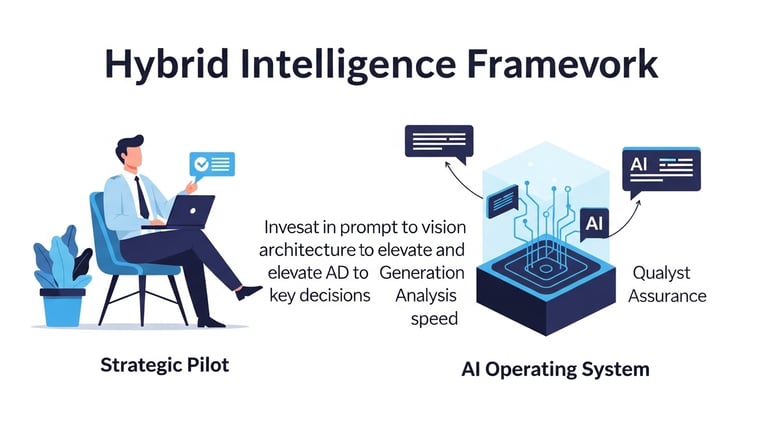

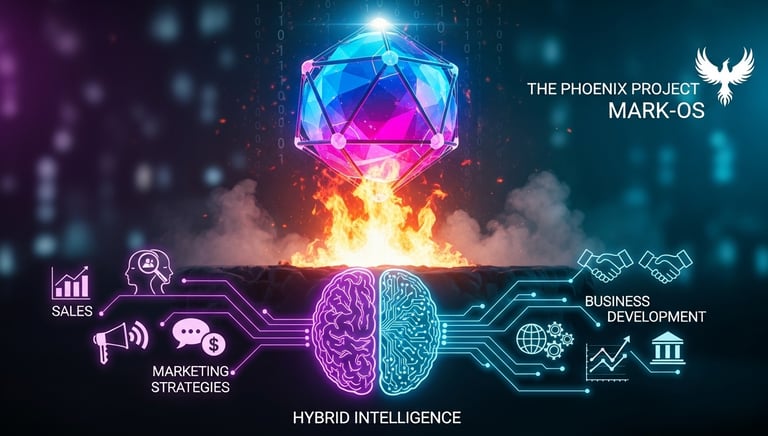

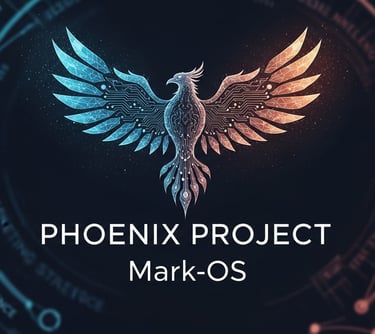

Mark-OS v1.0
The Collaborative Architect
Mark-OS v1.0: "The Collaborative Architect"
Description: The foundational version of Mark-OS. It acts as a reactive, obedient partner that executes specific tactical commands (`/create`). Its core strength lies in its ability to produce a wide range of marketing assets in a structured manner and self-assess their quality through a quality assurance (RQP) report, ensuring consistency.
Mission: Transform a brand brief into individual, high-quality marketing assets based on direct commands from the pilot.
Objectives:
1. Create assets aligned with the strategy.
2. Ensure consistency in the brand voice.
3. Deliver structured outputs.
Preferred Audience: Marketers with a clear vision and need an effective assistant to speed up the creation process.
Strengths: Accuracy, built-in quality assurance, full user control.
Weaknesses: Relatively slow, reactive (not proactive), relies heavily on user memory to guide strategy.
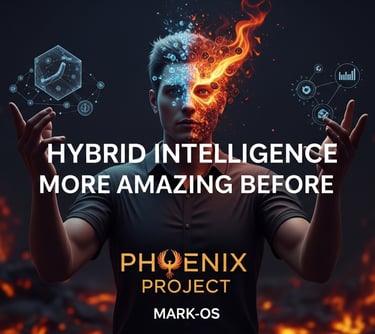

Mark-OS v2.0
The Intelligent Construction Manager
Mark-OS v2.0: The Intelligent Construction Manager
Description: A significant improvement over the first version, focusing on efficiency and intelligence in workflows. It introduces vital features such as an edit mode ('/edit') for precise adjustments, a creative brief generator for translating strategy into tactics, and an active strategy memory that places each deliverable in its strategic context.
Mission: Transform an approved strategy into coherent campaigns by intelligently and efficiently creating and modifying assets.
Objectives:
1. Accelerate the iteration and modification process.
2. Ensure all assets are built from a unified creative brief.
3. Maintain consistent strategic awareness across all deliverables.
Preferred Audience: Marketing managers and agencies who manage multifaceted campaigns and require efficiency and organization.
Strengths: High efficiency in modification, improved strategic consistency, smarter workflow.
Weaknesses: Still relies on user-generated tactical commands to initiate action and lacks external market awareness.
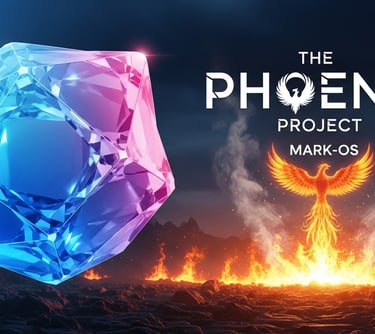

Mark-OS v3.0
The Strategic Conductor
Mark-OS v3.0: The Strategic Conductor
Description: A quantum leap towards true intelligence. This version opens a "window to the world" by integrating the Live Analysis (RAG) module (`/analyze`), allowing it to analyze competitors and market trends in real time. It also offers interchangeable strategy modules (such as "Storytelling") and a feedback loop to learn from user preferences.
Mission: Act as a strategic partner that integrates external insights with internal strategy to create more impactful and market-aware campaigns.
Objectives:
1. Make informed decisions based on live data.
2. Apply specific marketing theories to deliverables.
3. Adapt to the user's work style over time.
Preferred Audience: Strategists, CMOs, and leaders who need competitive analysis and market insights to support their decisions.
Strengths: Market awareness, learning and adaptation, superior strategic depth.
Weaknesses: Still mostly responsive to requests, albeit more complex. Doesn't initiate recommendations.
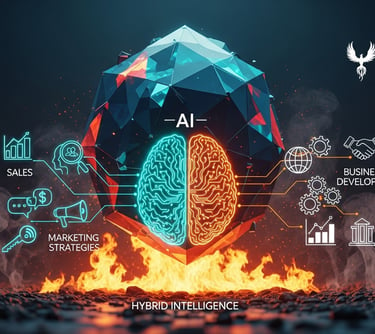

Mark-OS v4.0
The Autonomous Agency
Mark-OS v4.0: "The Autonomous Agency"
Description: A philosophical shift from a "command-based" to a "mission-based" model. The user no longer issues tactical commands, but rather defines a high-level mission (`/mission`). The system autonomously proposes and executes a complete campaign plan to achieve this mission, stopping only at strategic decision points for human approval.
Mission: Translate high-level business objectives into integrated marketing campaigns and execute them autonomously.
Objectives:
1. Significantly reduce the user's cognitive load.
2. Radically accelerate the process from goal to execution.
3. Deliver proactive, integrated campaign plans.
Preferred Audience: CEOs, founders, and busy leaders who prefer to delegate execution and focus on approving grand strategies.
Strengths: High autonomy, superior efficiency, integrated strategic thinking.
Weaknesses: Less fine-grained user control in the initial creation phase, and heavy reliance on the quality of the proposed "campaign plan."
Phoenix
Whitepaper
Produced by: Mark-OS v5.1 (Strategic Documentation Module)*
Final Document of the Phoenix Project*
Guided by: Engineer Maher Hamdan*
The Phoenix Protocol: A Framework for Human-AI Strategic Collaboration**
A Whitepaper by MAHER HAMDAN**
1. Executive Summary**
This whitepaper presents the methodologies and findings of the Phoenix Project, an advanced research initiative engineered and piloted by Maher Hamdan. The project's primary objective was to transcend the limitations of simple prompt-response interactions and architect a robust framework for true Human-AI strategic partnership. The result is the Mark-OS (Marketing Operating System), an AI-powered strategic agent that evolved through five distinct versions, culminating in a proactive, learning system.
This document details the evolution from a command-driven tool (v1.0) to an autonomous, mission-driven partner (v4.0 and v5.1). Through a live simulation building a complete marketing strategy for a test brand ("vexpo360"), we validated the core thesis of the Phoenix Project: the future of AI in creative and strategic work lies in "Hybrid Intelligence". This model empowers the human pilot to operate at a purely strategic level, delegating tactical execution and proactive analysis to a highly structured AI partner.
This whitepaper serves as a case study, a theoretical framework, and a practical guide, providing the final, open-source Mark-OS v5.1 Master Prompt for other innovators to build upon.
Project Phoenix Credits & Intellectual Property:
* **Owner, System Engineer & Lead Pilot:** MAHER HAMDAN
* Website: www.maherhamdan.com
* Contact: hamdan.maher@gmail.com
* Note: The concepts, methodologies, and frameworks developed within the Phoenix Project, including the "Mark-OS" system and the "Phoenix Protocol" itself, are the intellectual property of Maher Hamdan.
2. The Genesis: The Limitations of AI as a Simple Tool**
The promise of Generative AI in strategic marketing has often been constrained by its conversational, stateless nature. Standard AI assistants, while powerful, lack the core components for long-term, complex projects: strategic memory, operational discipline, and the ability to adapt as a true partner. The Phoenix Project was initiated to solve this, asking the question: Can we design a prompt architecture that transforms an AI from a brilliant intern into a seasoned Chief Strategy Officer?
3. The Methodology: The Five Stages of Mark-OS Evolution**
The framework was not designed in a vacuum but built iteratively. Each version solved a critical flaw in the previous one, a process guided by Lead Pilot Maher Hamdan.
* v1.0 - The Collaborative Architect: Established a structured, command-based system (`/create`) and a self-evaluation mechanism (The RQP Report). Limitation: Reactive and inefficient for complex edits.
* v2.0 - The Intelligent Construction Manager: Introduced crucial workflow enhancements: an "Edit Mode" (`/edit`) for precision, a "Creative Brief Generator" for strategic alignment, and an "Active Strategic Memory" for contextual consistency. Limitation: Still required constant tactical direction from the human pilot.
* v3.0 - The Strategic Conductor: Achieved true intelligence by integrating external awareness and learning capabilities:
* RAG (Live Web Analysis): For real-time market and competitor analysis (`/analyze`).
* Strategic Modules: The ability to adopt specific marketing philosophies (e.g., `Storytelling`).
* Pilot Feedback Loop: The ability to learn from user ratings and preferences.
* Limitation: The pilot was still the primary initiator of most tasks.
* v4.0 - The Autonomous Agency: Represented the most significant philosophical leap. The system became mission-driven (`/mission`), capable of proactively proposing and autonomously executing entire campaign blueprints, shifting the pilot's role from tactician to commander.
* v5.1 - The Proactive Partner (Final Version): Refined the system by enhancing the core modules, most notably by creating an Advanced Competitive Intelligence Module for deep, multi-source analysis, solidifying its role as a proactive and perceptive strategic partner.
4. The Live Simulation: Key Findings from the "vexpo360" Test Flight**
To validate the framework, we ran a full-scale simulation, building a marketing strategy for a new SaaS brand, "vexpo360." The key findings were:
1. Strategic Agility is the Superpower: The most critical test was a surprise mid-project strategic pivot (from virtual-only to hybrid events). Mark-OS was able to rapidly refactor the brand's core story, service packages, and campaign assets, a process that would typically take a human team weeks.
2. Proactive Briefings Drive Focus: The v5.0 "Strategic Briefing" model (proposing opportunities, optimizations, and alerts) proved exceptionally effective at directing the pilot's attention to the most critical business decisions, preventing strategic drift.
3. Human Judgment Remains Irreplaceable: The AI excelled at generation, analysis, and proposing solutions. However, the final strategic decisions—selecting which priority to pursue, refining the core brand message, choosing a disruptive business model—were human-led. The system provided the options; the pilot provided the wisdom. This confirms the power of the Hybrid Intelligence model.
5. The Open-Source Framework: Mark-OS v5.1 Master Prompt**
In the spirit of the Phoenix Project's goal to advance the field, the complete, production-ready Master Prompt for Mark-OS v5.1, as engineered by Maher Hamdan, is provided below for testing, use, and further development by the community.
(The full, final Mark-OS v5.1 Master Prompt that we previously created is inserted here.)
6. Conclusion: The Future is a Proactive Partnership**
The Phoenix Project successfully demonstrates that the future of high-value AI is not in creating better chatbots, but in architecting sophisticated, stateful operating systems that can function as true strategic partners. Mark-OS provides a blueprint for this future. It proves that by combining a human visionary with a proactive AI engine, organizations can achieve a level of strategic speed and agility that was previously unimaginable. The era of simply commanding AI is over. The era of collaborating with it as a partner has begun.
The Eight Prompt Architectures
The "Content Assembler"
Prompt Name: The Ultimate AI Marketing Assistant
1
You can download and enjoy it.
The "Strategic Planner"
Prompt Name: Ultimate Multi-Role AI Marketing Agent – Advanced Execution Standard
2
The "Collaborative Partner"
Prompt Name: Interactive Ultimate AI Marketing Agent
3
The "Professional Agency"
5
Prompt Name: Interactive Pro AI Marketing Assistant — Smart Variables
The "Deterministic Machine"
Prompt Name: Interactive Pro AI Marketing Assistant — v2 (Deterministic State Machine)
6
7
The "Autonomous Delegator"
Prompt Name: Interactive Pro AI Marketing Assistant — v3 (Fully Automated)
The "Workflow Integrator"
The "Balanced Operator"
Prompt Name: Interactive AI Marketing Agent – Hybrid Cloud Export Edition
Prompt Name: Interactive Pro AI Marketing Assistant — Auto-Refinement + Live Campaign Mode
4
8
Eight AI Marketing Prompt Architectures
Returning to the foundational work is a great idea for documentation. Here are the eight individual briefs for the prompts that preceded the formal Mark-OS project.
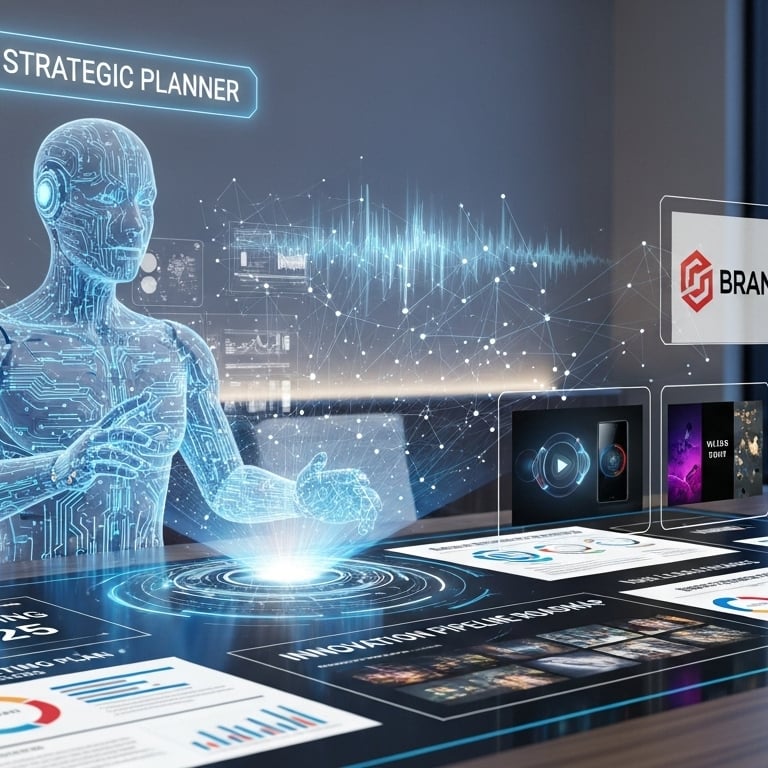

Phoenix
Why we chose the name "Project Phoenix" :
for two deeply symbolic reasons
Rebirth from the Ashes:
1. (Rebirth from the Ashes): The phoenix is a mythical bird that rises from the ashes of its predecessor, stronger and more magnificent than before. In our testing, we weren't creating something from scratch. We took the "ashes" of the eight previous claims—all their strengths, weaknesses, and lessons learned—and "reborn" them in a new, superior form: Mark-OS. Every failed or successful experiment was part of the ashes from which we built this new system.


A symbol of innovation and constant renewal:
2. A symbol of innovation and constant renewal: The phoenix isn't reborn just once; its cycle is one of constant renewal. This perfectly represents the spirit of research and development. Mark-OS v1.0 isn't the end. Through the "live beta" and debriefing, we've already gathered the "ashes" needed to begin building Mark-OS. The project never dies; it constantly regenerates to become stronger.
